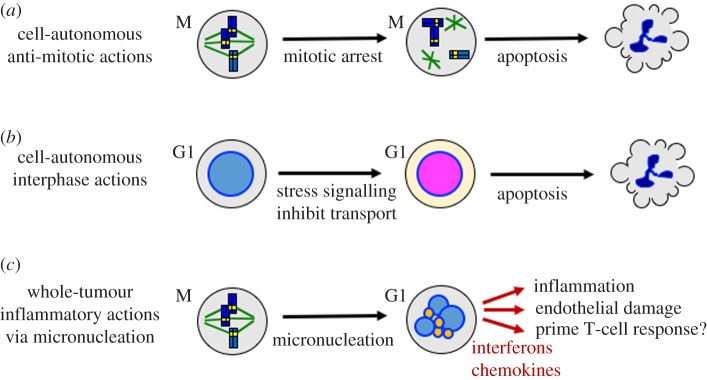Figure 1.
Three models for the anti-tumour actions of paclitaxel (illustration by T.J.M.). (a) Anti-mitotic actions that cause cell-autonomous death via mitotic arrest or chromosome mis-segregation. This well-characterized action accounts for essentially all cell killing in two-dimensional cell culture and is shared with mitosis-specific drugs [16,17]. (b) Interphase actions that cause cell-autonomous death of non-dividing cells. Proposed pathways include activation of MAPK signalling [18,19] and inhibition of cytoplasm–nucleus trafficking [20]. Mitosis-specific drugs lack these actions. (c) New model for whole-tumour action via inflammatory micronucleation. Perturbation of mitosis and cytokinesis by taxanes generates G1 cells with multiple micronuclei [7]. Small micronuclei are coloured orange to signify possible DNA damage [9] and cGAS recruitment. These effects in micronuclei activate inflammatory signalling, causing secretion of inflammatory cytokines and chemokines that promote whole-tumour regression in sensitive patients.

